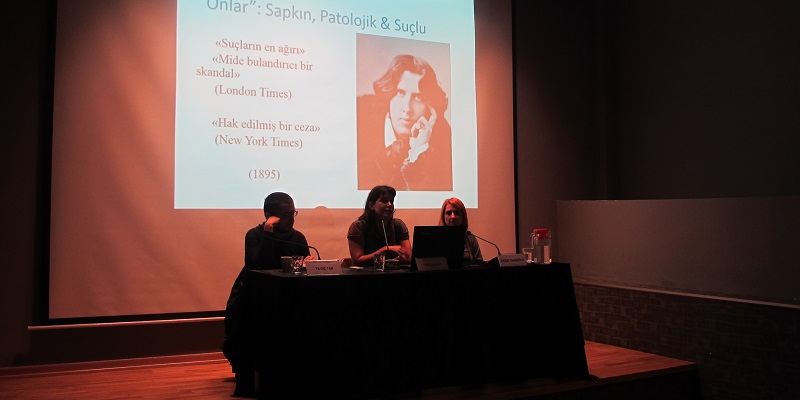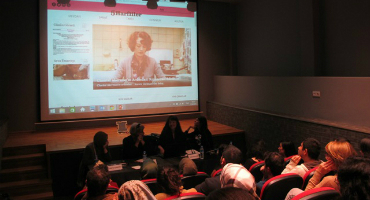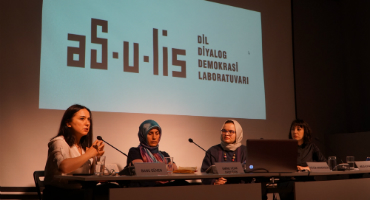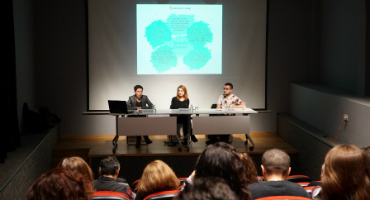The second event of thematic workshop series on discriminatory discourse in the media and rights-based approach to journalism, entitled ‘Homophobia and Transphobia as part of Violation of Rights and Violence’ was organized in Havak Hall, Anarad Hığutyun Building on October, 15 2015 by Hrant Dink Foundation. During the workshop, news about LGBTIs in the media, the different ways in which LGBTIs have been portrayed in the news content, homophobic and transphobic discourse in the news, and possible ways to increase non-discriminatory news examples were discussed by the contribution of Itır Erhart (İstanbul Bilgi University, Communications Department), Çiçek Tahaoğlu (Bianet) and Yıldız Tar (Kaos GL).
Firstly, Itır Erhart opened up the terms masculinity and hegemonic masculinity for the discussion; she explored how different identities other than heterosexual male are systematically marginalized. Erhart, analyzed through several national and international news how media reproduces this patriarchal and heterosexist system. Those examples exposed how LGBTIs appear on media as deviant, pathologic and criminal. Erhart argued that these targeting hate speeches are intended to cause moral panic in the society which eventually leads to hate crimes. She recommended to combat hegemonic masculinity starting from children’s books. The representation of LGBTIs and different sexual orientations in children’s books can be a solution to combat homophobia and transphobia. Shockvertising, as a method for raising awareness in the society, could be another possible solution she suggested.
Following Erhart’s speech, Çiçek Tahaoğlu evaluated the media’s discourse as the reflection of homophobia and transphobia in the society. She shared her experiences as a journalist at Bianet by focusing on rights-based journalism which aims to combat sexist and homophobic discourse in media. She said: “Main goal of rights-based journalism is to combat violations of rights; in that sense, the news should be produced for the benefit of disadvantaged groups. At the same time, news should be informative about rights and these news should not cause any new forms of violation of rights”. On the other hand, she emphasized the significance of producing news covering national and international regulations on LGBTI rights, getting opinions of LGBTIs about the news agenda, and making success stories visible. Tahaoğlu underlined the fact that the term LGBTI hadn’t even appeared in the media just a few years ago; however, today even mainstream media frequently uses the right terminology which is the success of the movement.
Lastly, in her presentation, Yıldız Tar historicized the appearance of LGBTIs in the media within three different periods. In 1970s, LGBTIs appeared in media as ‘freaks’. Following the 1980 coup d’état, LGBTIs appeared in the media only in relation with the terror incidents and generally as criminals. In 2000s, thanks to the rise of LGBTI movement, politically right terminology had started to take place in the media; nonetheless, discriminatory discourse and hate speech against LGBTIs continue to exist in the news. In this respect, Tar talked about the establishment of KAOS GL and shared their experiences in the field of LGBTI journalism. Tar analyzed several news to show the significance of rights-based journalism for LGBTI rights.
The presentations were followed with a discussion on how LGBTIs’ narratives can be made visible in the media. It was emphasized that it is the responsibility of all media outlets to produce news on LGBTIs in consultation with the subjects of news. The understanding of the media as a sphere open to change was suggested while current efforts to transform the media were mentioned. The workshop ended with a discussion about the possible ways in which to combat discrimination against LGBTIs.





